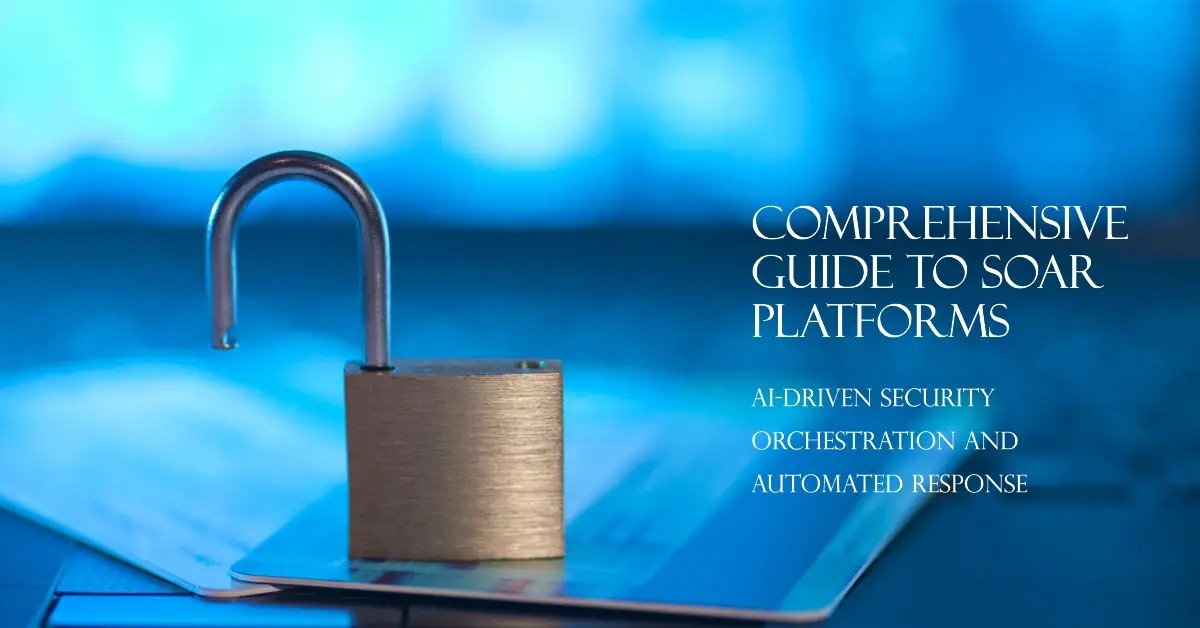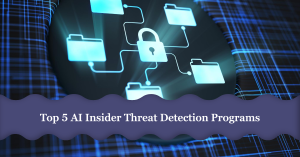In an age of increasingly sophisticated and frequent cyber threats, businesses are under immense pressure to safeguard their digital assets. Traditional security measures are no longer sufficient to combat the ever-evolving landscape of cyber threats. This is where AI-driven Security Orchestration and Automated Response (SOAR) platforms come into play, revolutionizing how organizations approach cybersecurity. This article delves into AI-driven SOAR platforms, exploring their benefits, key features, and how they can enhance an organization’s security posture.
Understanding SOAR Platforms
Security Orchestration, Automation, and Response (SOAR) platforms are designed to help organizations manage and respond to security threats more efficiently. SOAR platforms integrate various security tools and systems, providing a unified approach to threat management. They automate routine security tasks, orchestrate workflows, and enable faster incident response, significantly reducing the time it takes to detect and mitigate threats.
The Role of AI in SOAR
Artificial Intelligence (AI) enhances SOAR platforms by providing advanced analytics, machine learning capabilities, and intelligent automation. AI-driven SOAR platforms can analyze vast amounts of data in real-time, identify patterns and anomalies, and respond to threats quickly and accurately. Here’s how AI contributes to the effectiveness of SOAR platforms:
- Advanced Threat Detection: AI algorithms can identify complex and subtle threats that traditional systems might miss.
- Automated Incident Response: AI can automate responses to common security incidents, freeing up human resources for more complex tasks.
- Predictive Analytics: AI can predict potential security incidents by analyzing historical data and identifying patterns.
- Enhanced Decision Making: AI provides actionable insights and recommendations, aiding security teams in making informed decisions.
Key Features of AI-Driven SOAR Platforms
- Automated Playbooks:
AI-driven SOAR platforms use automated playbooks to respond to security incidents. These playbooks are predefined workflows that automate routine tasks, such as isolating affected systems, blocking malicious IP addresses, and notifying relevant stakeholders. Automated playbooks reduce response times and ensure consistent and effective incident handling. - Threat Intelligence Integration:
SOAR platforms integrate with threat intelligence feeds to gather information about known threats. AI analyzes this data to identify and prioritize threats based on their severity and relevance to the organization. This integration enables proactive threat hunting and faster incident response. - Incident Management:
AI-driven SOAR platforms provide comprehensive incident management capabilities, including incident tracking, documentation, and reporting. They offer a centralized dashboard where security teams can monitor and manage all security incidents in real time. - Security Analytics:
AI-powered analytics tools analyze security data from various sources, such as logs, network traffic, and endpoints. These tools identify patterns, anomalies, and potential threats, providing security teams valuable insights to enhance their threat detection and response capabilities. - Collaboration and Communication:
SOAR platforms facilitate collaboration and communication among security team members. They provide tools for sharing information, assigning tasks, and tracking progress, ensuring incidents are handled efficiently and effectively. - Integration with Security Tools:
AI-driven SOAR platforms integrate with various security tools and systems, such as SIEM (Security Information and Event Management), endpoint protection, firewalls, and more. This integration enables seamless data sharing and coordinated response across different security solutions.
Benefits of AI-Driven SOAR Platforms
- Faster Incident Response:
By automating routine tasks and orchestrating workflows, AI-driven SOAR platforms significantly reduce the time it takes to detect and respond to security incidents. This rapid response minimizes the impact of threats and helps protect critical assets. - Improved Efficiency:
Automation and orchestration free up valuable time for security teams, allowing them to focus on more strategic and complex tasks. This increased efficiency leads to better resource utilization and improved overall security posture. - Enhanced Threat Detection:
AI algorithms analyze vast amounts of data in real time, identifying threats that traditional systems might miss. This advanced threat detection capability enables organizations to avoid emerging threats and vulnerabilities. - Proactive Security:
AI-driven SOAR platforms enable proactive threat hunting and incident prevention by analyzing historical data and identifying patterns. This proactive approach helps organizations identify potential threats before they materialize, reducing the risk of successful attacks. - Consistent and Effective Response:
Automated playbooks ensure security incidents are handled consistently and effectively, following predefined workflows and best practices. This consistency reduces the likelihood of errors and ensures incidents are resolved promptly. - Scalability:
AI-driven SOAR platforms can scale to meet the needs of organizations of all sizes. They can handle large volumes of data and security incidents, making them suitable for small and large businesses.
Leading AI-Driven SOAR Platforms
1. Splunk Phantom
Overview:
Splunk Phantom is a leading SOAR platform that leverages AI to provide advanced threat detection, automated response, and comprehensive incident management. It integrates seamlessly with various security tools and systems, offering a unified approach to threat management.
Key Features:
- Automated Playbooks: Predefined workflows for automated incident response.
- Threat Intelligence Integration: Integration with multiple threat intelligence feeds for proactive threat hunting.
- Incident Management: Comprehensive incident tracking, documentation, and reporting.
- Security Analytics: AI-powered analytics tools for real-time threat detection and analysis.
- Integration with Security Tools: Seamless integration with SIEM, endpoint protection, firewalls, and more.
Benefits:
- Faster Incident Response: Automated playbooks and real-time analytics reduce response times.
- Enhanced Threat Detection: AI algorithms identify complex and subtle threats.
- Improved Efficiency: Automation and orchestration free up valuable time for security teams.
2. IBM Resilient
Overview:
IBM Resilient is a robust SOAR platform that uses AI to enhance threat detection, incident response, and security automation. It offers a comprehensive suite of features to streamline security operations and improve overall security posture.
Key Features:
- Automated Playbooks: AI-driven workflows for automated incident response.
- Threat Intelligence Integration: Real-time threat intelligence feeds for proactive threat hunting.
- Incident Management: Centralized dashboard for incident tracking, documentation, and reporting.
- Security Analytics: AI-powered analytics tools for identifying patterns, anomalies, and potential threats.
- Collaboration and Communication: Tools for sharing information, assigning tasks, and tracking progress.
Benefits:
- Faster Incident Response: Rapid detection and response to security incidents.
- Proactive Security: Advanced threat hunting and incident prevention.
- Consistent and Effective Response: Automated workflows ensure consistent and effective incident handling.
3. Cortex XSOAR
Overview:
Cortex XSOAR, developed by Palo Alto Networks, is a powerful SOAR platform that combines AI-driven threat detection, automated response, and comprehensive incident management. It integrates with a wide range of security tools and systems, providing a unified approach to threat management.
Key Features:
- Automated Playbooks: Predefined workflows for automated incident response.
- Threat Intelligence Integration: Integration with multiple threat intelligence feeds for proactive threat hunting.
- Incident Management: Comprehensive incident tracking, documentation, and reporting.
- Security Analytics: AI-powered analytics tools for real-time threat detection and analysis.
- Integration with Security Tools: Seamless integration with SIEM, endpoint protection, firewalls, and more.
Benefits:
- Faster Incident Response: Automated playbooks and real-time analytics reduce response times.
- Enhanced Threat Detection: AI algorithms identify complex and subtle threats.
- Improved Efficiency: Automation and orchestration free up valuable time for security teams.
4. Swimlane
Overview:
Swimlane is a flexible and scalable SOAR platform that leverages AI to enhance threat detection, incident response, and security automation. It offers many features to streamline security operations and improve overall security posture.
Key Features:
- Automated Playbooks: AI-driven workflows for automated incident response.
- Threat Intelligence Integration: Real-time threat intelligence feeds for proactive threat hunting.
- Incident Management: Centralized dashboard for incident tracking, documentation, and reporting.
- Security Analytics: AI-powered analytics tools for identifying patterns, anomalies, and potential threats.
- Collaboration and Communication: Tools for sharing information, assigning tasks, and tracking progress.
Benefits:
- Faster Incident Response: Rapid detection and response to security incidents.
- Proactive Security: Advanced threat hunting and incident prevention.
- Consistent and Effective Response: Automated workflows ensure consistent and effective incident handling.
Implementing AI-Driven SOAR Platforms
Implementing an AI-driven SOAR platform involves several steps to ensure a smooth transition and effective integration with existing security infrastructure. Here are some critical considerations for implementing a SOAR platform:
- Assessment and Planning:
Conduct a thorough assessment of your organization’s security needs and existing infrastructure. Identify the key areas where a SOAR platform can add value and develop a detailed implementation plan. - Selection of SOAR Platform:
Choose a SOAR platform that aligns with your organization’s needs and requirements. Consider factors such as integration capabilities, scalability, and ease of use. - Integration with Security Tools:
Integrate the SOAR platform with your existing security tools and systems. Ensure seamless data sharing and coordinated response across different security solutions. - Customization and Configuration:
Customize and configure the SOAR platform to meet your organization’s security requirements. Develop and test automated playbooks to ensure they work as intended. - Training and Onboarding:
Provide comprehensive training to your security team on how to use the SO
AR platform effectively. Ensure that team members are familiar with the platform’s features and functionalities.
- Monitoring and Evaluation:
Continuously monitor and evaluate the performance of the SOAR platform. Collect feedback from users and make necessary adjustments to improve its effectiveness.
Conclusion
AI-driven Security Orchestration and Automated Response (SOAR) platforms represent a significant advancement in cybersecurity. By leveraging the power of AI, these platforms provide advanced threat detection, automated incident response, and comprehensive security management, enabling organizations to stay ahead of evolving cyber threats. With features such as automated playbooks, threat intelligence integration, and AI-powered analytics, SOAR platforms enhance the efficiency and effectiveness of security operations, ensuring a robust security posture.
Investing in an AI-driven SOAR platform is a proactive step towards safeguarding your organization’s digital assets and ensuring long-term success. Evaluate your options, consider your needs, and choose a solution that aligns with your security goals and business objectives. A SOAR platform can enhance your organization’s ability to detect, respond to, and mitigate security threats, ensuring a safer and more secure digital environment.
Finally, if you want a comprehensive guide to AI-driven security orchestration and automated response (SOAR) platforms, learn everything you need here.




